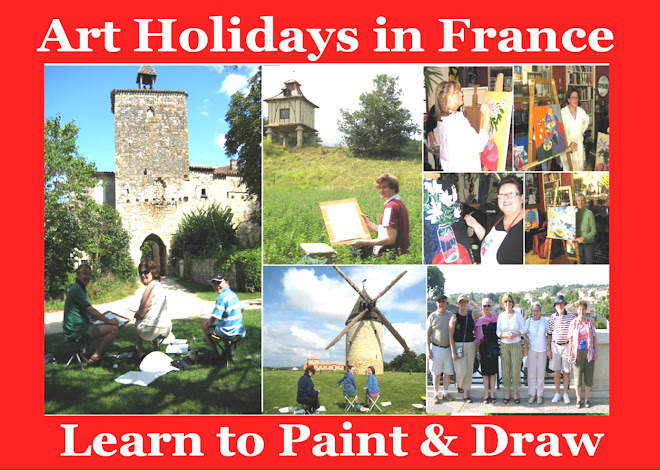
Pigeonniers have become a painting passion.
Ever since I first saw these intriguing sentinels on my travels around France, I have painted dozens of them, and I now always have a few of them on display at my gallery next to the village fountain in Mézin.
The English translation “dovecote” does not do pigeonniers adequate justice, because it conjures up romanticised images of white fantails on a tall pole holding up a twee wooden house in an idealised English country garden. And in the UK you can buy a dovecote in any hardware store for a few quid. But in France, pigeonniers have a special socio-historical significance. Perhaps because the pigeon acquired such an important place in French cuisine.
Pigeonniers were originally brought to Europe by the Romans, but in France prior to the Revolution the keeping of pigeons was a complicated privilege restricted to the nobility in a complex hierarchical display of wealth and power. Pigeonniers were therefore usually extremely ornate and elaborate constructions designed to demonstrate social position and authority. Just like expensive cars have become a status symbol today, and keeping up with the Joneses means buying a new Jag or Merc every couple of years, in those days the Fat Cats needed bigger and flashier pigeonniers to show their position in the social pecking order. A by product was the very valuable pigeon fertiliser which was usually included as part of one’s estate, so that on dying, you were worth so many bags of pigeon dung on top of all your other assets.
In the nineteenth century the keeping of pigeons became universally permitted in France and in many cases pigeonniers were then incorporated into domestic dwellings, whether over gatehouses, in lofts or courtyards or as towers which buttress the perimeter walls of chateaux or large country houses.
But it’s the stand-alone pigeonniers you see all over France that really intrigue me, because of the way they mirror the mainstream regional or departmental stylistic and architectural differences. Sometimes in stone, sometimes colombage, sometimes brick and quite often on pillars making them look like a backdrop to a “Doctor Who” episode.
Fortunately, almost all were spared the 25 years of Revolutionary vandalism, which followed the Terror after 1789. This means that long after they’d stopped chopping off the heads of the royals and nobles, the French can still chop the heads off a few pigeons for the table.
There are always a few pigeonniers on show at La Petite Galerie in Mezin. Visitors are always welcome - entry is free - and you can also visit my studio if you like.
The pics above show:
Jim Gensheer and his group who come regularly to Gascony
Ray with a pigeonnier and Almond Falliers out hunting.
Armand Falliers? Who's he?
He was the President of Fance from 1906 to 1913. And he was born our village of Mezin. (Much more on him later).


No comments:
Post a Comment